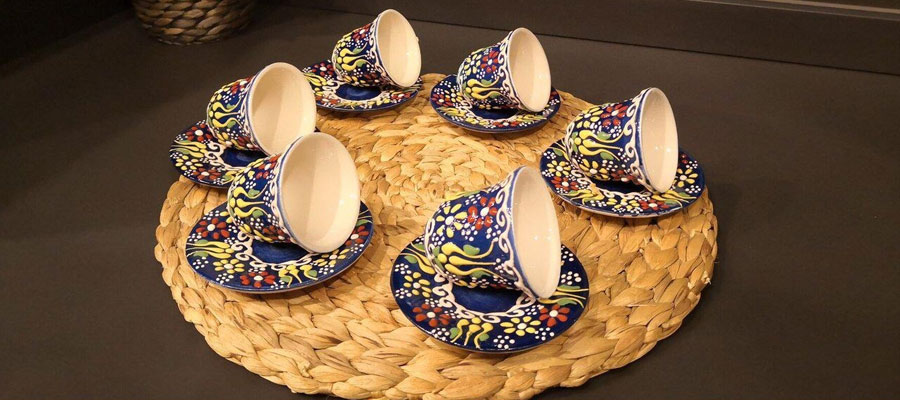The Pottery and Traditional Ceramics: The beginning of the art of tile goes back to the earliest times when pottery was made and soil began to be cultivated. This art has evolved with the technical knowledge, experience and existing skills of each civilization – traditional Iznik Kütahya pottery and ceramics art.
The oldest pottery in history, ceramic samples dating back 9 thousand years and found in Çatalhöyük in Anatolia are accepted. It is assumed that the beginning of ceramics in Iznik dates back to the middle of the 15th century. It reached its brightest period, especially in the middle of the 16th century. Iznik tiles, which rarely appear at auctions in Europe and America today, change hands with very high values.

The products made in Iznik, from vases, bowls, tears, tiles to objects such as lamps can be found not only in Turkey but also in various museums and collections around the world. Iznik ceramics piece by piece or as a piece of decoration can be found in many parts of Turkey and historical places while maintaining their beauty – pottery art and traditional Iznik Kütahya ceramics.
Iznik ceramics were generally used in the wall decoration of Ottoman palaces, mosques, fountains and tombs.
Today the finest examples can be found at Topkapı Palace, Rüstem Paşa Mosque, Süleymaniye Mosque, Kanuni and Eyüp Sultan Mausoleums in Bursa, Green Mosque Mausoleum and Edirne Muradiye Mosque. In tiles, plants, animals, buildings, galleon patterns and supernatural symbols are often used. Their age-old strength, which makes Ottoman tiles invaluable, is the unique use of their transparent, colorful and stylized floral patterns and animal figures.
The end of Production
With the decline of the Ottoman Empire, Iznik ceramics, which were primarily tried to support the palace, lost their luminous period and even production came to a complete halt. Iznik ceramics, which began to lose importance at the end of the 17th century, were replaced by kutahya ceramics which had primarily been intended for citizens since the early 18th century.
The city of Kutahya in Anatolia is the oldest recognized place in the world where pottery production is the oldest since the times of the Phrygians, Rompans, Byzantines, Seljuks and Ottomans. According to each civilization, although from time to time there are different products and the art of pottery continues to exist to this day. Ceramics in Kütahya began to fill the gap in Iznik tiles from the beginning of the 18th century.
Want to know more about Turkish handcrafts? Have a look here.

